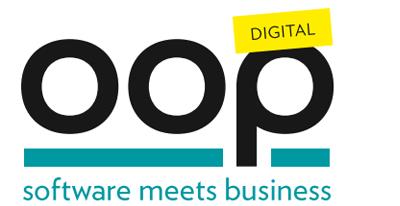Please note:
On this page you will only see the English-language presentations of the conference. You can find all conference sessions, including the German speaking ones, here.
The times given in the conference program of OOP 2023 Digital correspond to Central European Time (CET).
By clicking on "VORTRAG MERKEN" within the lecture descriptions you can arrange your own schedule. You can view your schedule at any time using the icon in the upper right corner.
Thema: Digital Transformation
- Montag
06.02. - Dienstag
07.02. - Mittwoch
08.02. - Donnerstag
09.02.
The Middle Management, who has the required knowledge for successful Digital Transformations, is not appropriately engaged and won as change agents.
This interactive session walks the audience through seven steps of an implementation path. Each step is heavily interwoven with leadership challenges, skills, and practices. Most often, those are tacit.
The right path helps move from tacit transactional management to explicit transformational leadership, a prerequisite for successful Digital…
I will share our hands-on experience with a cloud native (container) transformation that is currently unfolding. Technically, implementing an Open Shift Container Platform (bare metal) is pretty challenging. Doing this in a way that we will have pretty stuff in our data centers and at the same time making sure that our technical possibilities are actually being used effectively by product developers ... is a different challenge all together.
Join this session if you'd like to hear what we…
Firmen können kaum noch IT-Systeme neu entwickeln, ohne dass existierende Funktionalität mitwandert. Vor die Aufgabe gestellt, ein System von einem Fremdanbieter in eine Public Cloud zu überführen, hat sich gezeigt, dass hilfreiche Wanderführer rar sind.
Diese Session strukturiert Entscheidungswege und Erkenntnisse bei Cloud-basierten Migrationsvorhaben - abgeleitet aus der Migration und Modernisierung von einem Konsumenten-Service mit 6 PB Daten und ca. 2 Mio. Nutzern.
Zielpublikum:…
Modernization projects are not a straight line as there’s no one-stop shop. Balance is definitely the right word: we talk here about finding the proper trade-off between quality/costs/timeframe requirements and customized patterns for a successful legacy system modernization. Based on actual use cases, we’ll discuss the available solutions (ERP implementation, code rewriting, middleware, cloud…), and see why combining the relevant tools is key.
Let us take you on a modernization journey and get…
There are many discussions, slogans, and myths out there when it comes to sustainability. But what is behind all those slogans? What does “carbon neutral” really mean and how does it compare to “net-zero”? Is my cloud really running on renewable energy? What are the low-hanging fruits when it comes to reducing carbon emissions? And how does “carbon offsetting” really work?
This session explains all those slogans and concepts, sheds some light at common myths, and provides the audience with a…
The topic of Green Software is very important because software is everywhere and affects the environment indirectly through the usage of hardware. Jochen Joswig explains what Green Software means and more detailed how energy demand can rise through software usage. There are different degrees of software effects on the environment that can be considered and evaluated. Jochen Joswig is furthermore researching green software metrics, approaches, quality criteria and how they can be applied in the…
Change happens one person at a time. As a leader, you are responsible for helping to persuade people to accept the change. Many of us have been taught persuasion techniques that focus on giving information … and then more information. How is this working for you? Might there be a better way? This session will give you the opportunity to prepare other methods of persuasion for the changes you want to make.
Target Audience: Anyone who sees problems in their organization and would like to help make…
Sustainability needs change-ability. This 90-min panel will have on three speakers on change. How to move many people or a company to change the status quo. This question addresses the needs of organizations and likewise the needs of our society.
Target Audience: Change Management People, Everyone
Prerequisites: None
Level: Advanced
Extended Abstract:
We will combine three speakers with 20 min Impulse talks. There will be biological brewed beer in different flavors to accompany the tasteful and…
Artificial Intelligence (AI) and its sub-domain, Machine Learning (ML), have been developing quickly. Your organization could be planning for or be in the middle of an AI transformation.
In this talk, I will speak from my own experience managing the strategy and delivery for AI/ML programs and discuss practical steps for the executive leadership to ensure the success of their AI strategy and delivery.
Target Audience: Project Leaders, IT Leaders, Executives, Decision Makers
Prerequisites: None
…
When you want to make a change, the skeptics are lying in wait throughout the process. You must continually recognize them if you want the change to be sustainable. Who are they and why are they resisting?
We want to be understanding but oh, they can be annoying. We are told to increase communication, but before shouting more information, we must understand why they are irritating us.
This presentation will provide some practical tips for identifying and dealing with resistance in your…

